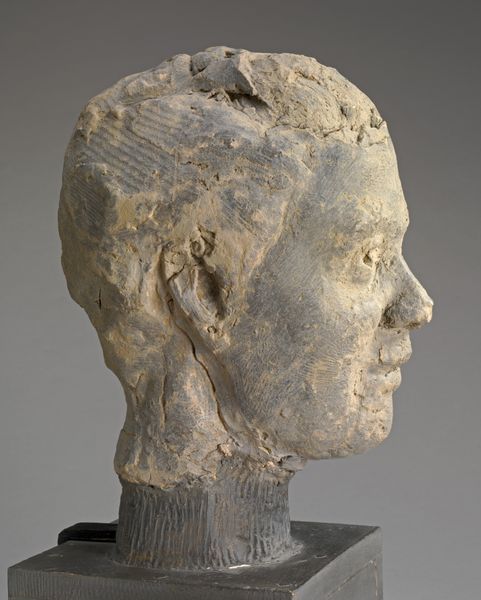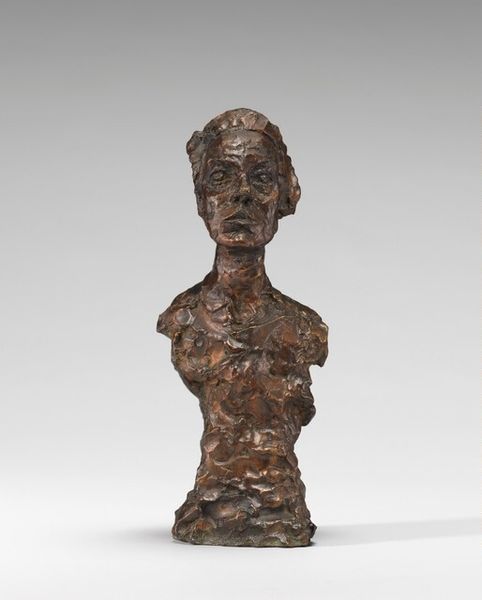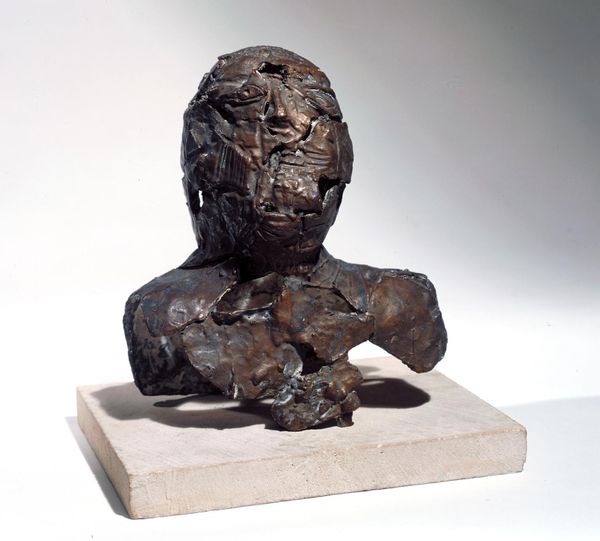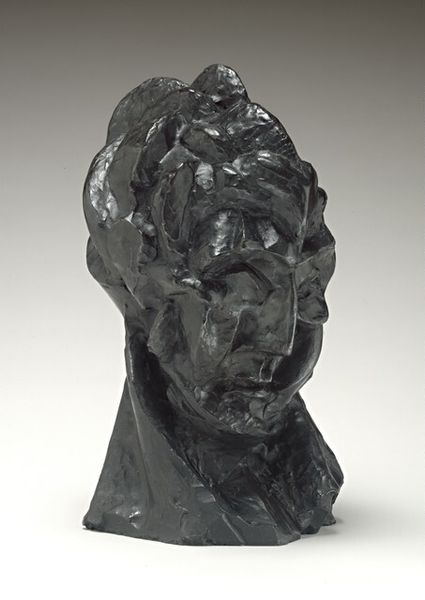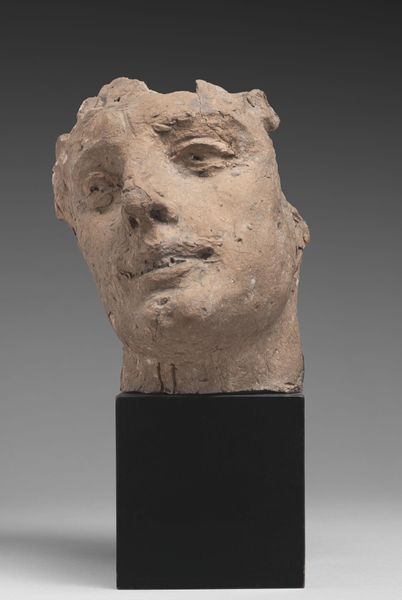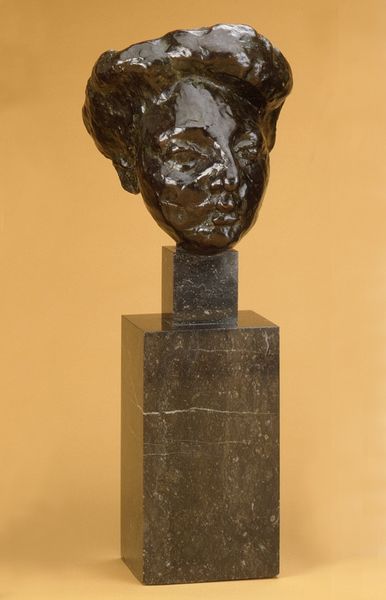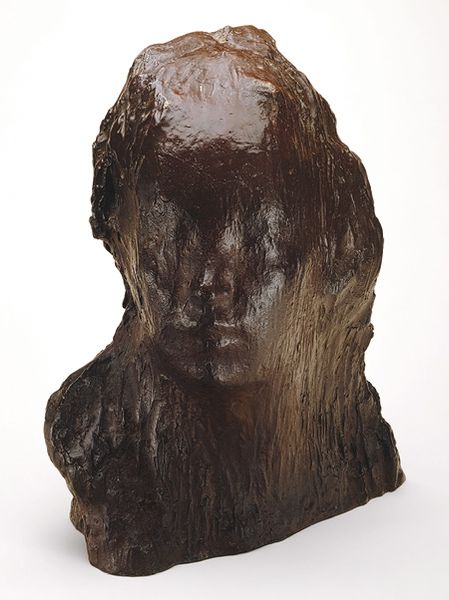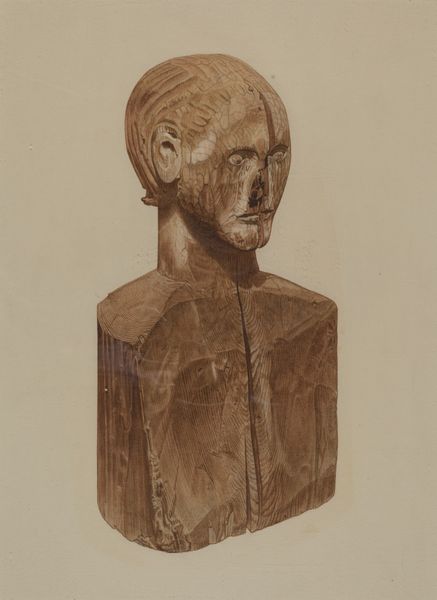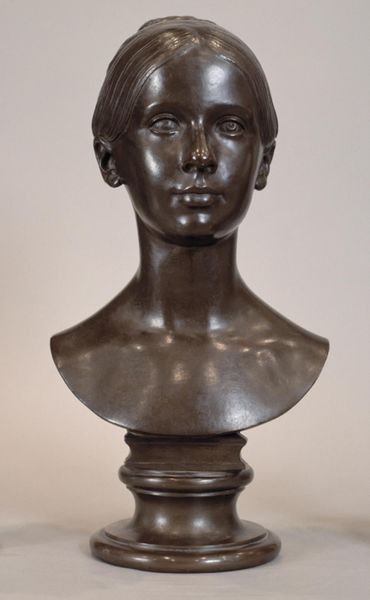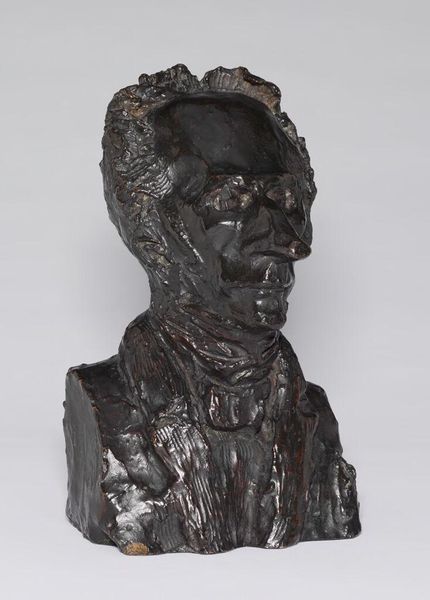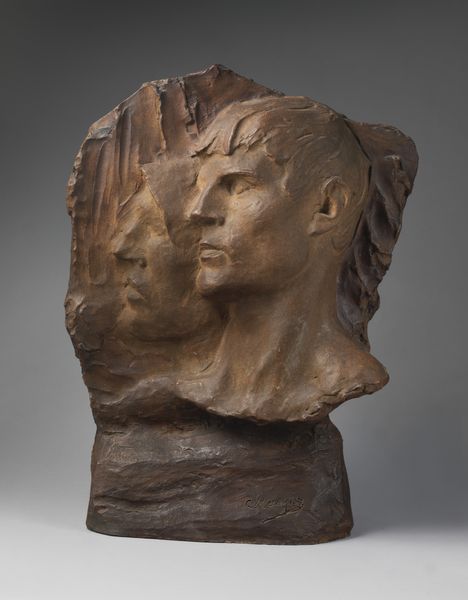
Dimensions: 67.2 × 21.3 × 30.5 cm (26 1/2 × 8 3/8 × 12 in.)
Copyright: Public Domain
Editor: This is "Head of Apollo" by Emile-Antoine Bourdelle, made sometime in the 1900s from bronze. It feels both classical and modern to me. The way the bronze is worked, it gives it a sense of age, but also a rawness that feels contemporary. What do you see in this piece, from a formal perspective? Curator: I find the surface treatment particularly compelling. Notice how the textures range from relatively smooth planes on the face to the rough, almost geological strata of the base. The bronze, inherently a medium of both strength and malleability, becomes a language in itself here. Editor: That’s a great way to put it. So you’re focusing on how Bourdelle is using the qualities of bronze itself? Curator: Precisely. Consider how the light catches the varying surfaces. The modulation from shadow to highlighted areas accentuates the contours of the head and draws our eyes to specific formal decisions. Ask yourself, what is the significance of these textural contrasts? What are the visual relationships? Editor: So, you’re looking beyond the representation of Apollo himself to see how the material and form create meaning. Curator: Indeed. Think of how the artist's tools—the chisel, the torch—have shaped the experience for the viewer. Bourdelle is not merely replicating the figure of Apollo, but also communicating through his materials and artistic processes. Are we invited to reflect upon our own perception and understanding of art? Editor: This has given me a completely different way to consider the sculpture; not just what it represents but how it’s made, and the choices Bourdelle made to show us Apollo in this particular way. Curator: Agreed. The enduring allure of art lies in its capacity to unlock our awareness of visual codes, which this bronze piece, like all the best, delivers to the perceptive viewer.
Comments
No comments
Be the first to comment and join the conversation on the ultimate creative platform.

